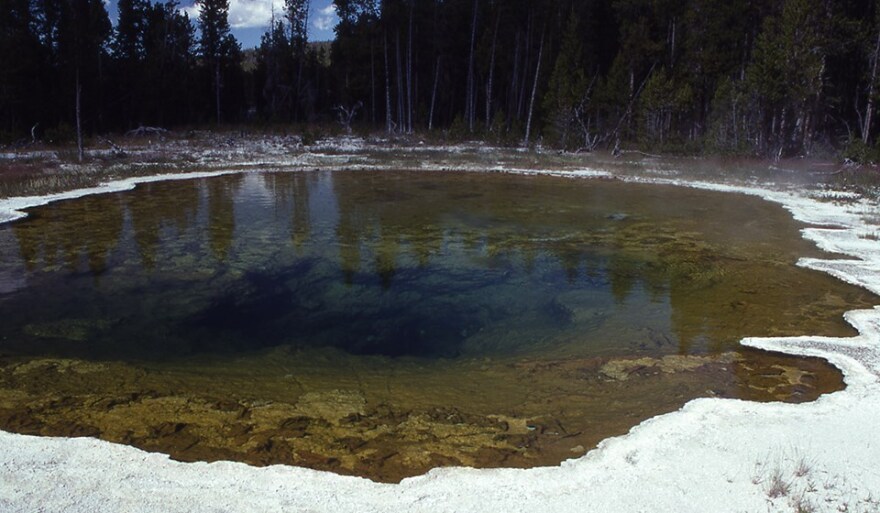Thermus aquaticus is a bacteria found in Yellowstone's thermal lakes - it's what gives some their brilliant yellow color. It was discovered almost 50 years ago, and it turns out to be a key component in most COVID-19 testing.
The test for many viruses, including coronavirus, rely on a technique called Polymerase Chain Reaction (PCR). In PCR, a sample, like from a nose swab of someone showing symptoms of coronavirus, is repeatedly heated and cooled. The amount of DNA in that sample doubles after each cycle, making it easier to see what kinds of DNA there are.
But heating genetic material can be tricky. Once it gets too warm, the strands can essentially dissolve and become useless. That's where T. aquaticus comes in. The bacteria live in lakes that can reach temperatures of up to 190 degrees Farenheight. The enzyme that helps the bacteria survive in those lakes is used in PCR to protect the genetic material from being destroyed by the heat.
Discovery of a game changer
But the value of T. aquaticus wasn't realized for almost 20 years after it was discovered. In the early 60s, Microbiologist Thomas Brock became curious about the bacteria in Yellowstone's geothermal areas. There had been little research on these bacteria, so Brock took on the task.
In 1969, along with undergraduate student Hudson Freeze, he discovered T. aquaticus - and changed the course of molecular biology.
"It's kind of an interesting story, how research that was being done for just basic research, trying to find out what kind of weird critters might be living in boiling water in Yellowstone, and it led to extremely widespread practical applications," Brock said.
The development of PCR
Later, in the 1980s, PCR technology was just beginning to develop. The first methods worked, but were difficult and time-consuming. Each heating cycle would severely damage the DNA Polymerase - the "copy machine" that doubled the number of samples.
Fortunately, Brock had entered his discovery into a database, making it accessible to other researchers. T. aquaticus could not only withstand high temperatures, but its DNA Polymerase was highly accurate, making it perfect to simplify and speed up PCR.
Additional Modifications
PCR can only be used with DNA. But the genetic material in the novel coronavirus is called RNA - essentially DNA's one stranded cousin. In order to perform PCR tests on coronavirus samples, the RNA of the virus has to be converted to DNA first. That DNA is also given a fluorescent tag that makes it stand out from the rest of the genetic material in the sample. The more times a copy is made with PCR, the brighter that tagged material becomes.
"[PCR] has been around a long time. But there are always new applications. And the coronavirus is an example of that," Brock said. "They took some procedures that had been used for many years, added them to some new procedures, and developed a test for the presence of the virus which is very sensitive. Which, of course, is the important thing here."
Have a question about this story? Contact the reporter, Ivy Engel, at iengel@uwyo.edu.








